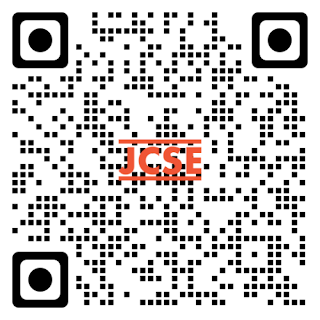Optimizing Transportation Routes and Costs in Crude Palm Oil Supply Chains using Linear Programming: A Case Study of PT.X, OKU Regency, South Sumatera
(1) University of Persada Indonesia YAI, IPB University
(2) IPB University
Abstract
Transportation is a crucial factor that significantly impacts the supply chain. Because there aren't enough roads and other ways to get around, it's hard for one of the companies in OKU Regency that makes crude palm oil to get its products to customers, especially when it rains. The company that produces cooking oil received a delivery of crude palm oil, accounting for 90% of total production, from PT.X. The delivery of crude palm oil to PT.Y was received later than the original schedule. Number formulas that are meant to solve PT.X transportation problems can be written in terms of linear programming methods. From the stages of collecting, processing data and testing formulations using the LINDO application, it was discovered that under ideal conditions there are 9 alternative transportation routes from origin city B to destination city TJ with the shortest time of 9 hours. The delivery of transportation mode uses 12 tanks with 9.5 tons capacity and 17 tanks with 8 tons capacity and the lowest transportation expenses are Rp. 487.580. The results of the general mathematical formulation can then be used to solve transportation problems for other cases with similar conditions to PT.X. This mathematical formulation can be used for making decisions in selecting transportation routes, selecting modes and transportation costs. Changes in production factors such as capacity, number of orders, travel time, delivery distance, fuel prices, and toll rates can change the decisions made by entering their actual values in the general mathematical formula that has been produced.
Keywords
Full Text:
PDFReferences
Marimin et al., “Supply chain performance measurement and improvement of palm oil agroindustry: A case study at Riau and Jambi Province,” IOP Conf. Ser. Earth Environ. Sci., vol. 443, no. 1, 2020, doi: 10.1088/1755-1315/443/1/012056.
S. Chopra, P. Menndl, and D. V. Kalra, Supply Chain Management Strategy, Plainning and Operation. Pearson India Education, 2016.
L. Rajabion, M. Khorraminia, A. Andjomshoaa, M. Ghafouri-Azar, and H. Molavi, “A new model for assessing the impact of the urban intelligent transportation system, farmers’ knowledge and business processes on the success of green supply chain management system for urban distribution of agricultural products,” J. Retail. Consum. Serv., vol. 50, no. May, pp. 154–162, 2019, doi: 10.1016/j.jretconser.2019.05.007.
S. Santoso and R. M. Heryanto, “Development of Two-Stage Transportation Problem Model with Fixed Cost for Opening the Distribution Centers,” J. Ilm. Tek. Ind., vol. 21, no. 1, pp. 63–71, 2022, doi: 10.23917/jiti.v21i1.17571.
S. Sahirman, Ardiansyah, M. Rifan, and E. Melmambessy, “Transportation model and techno economic as useful tools in agroindustry clustering: A case study in district Semangga, Merauke,” IOP Conf. Ser. Earth Environ. Sci., vol. 250, no. 1, 2019, doi: 10.1088/1755-1315/250/1/012058.
H. Shrivastava and I. I. T. Bombay, “Distribution and Inventory Planning in a Supply Chain Under Transportation Route Disruptions and Uncertain Demands,” vol. 12, no. 3, pp. 47–71, 2019, doi: 10.4018/IJISSCM.2019070103.
O. Cosma, P. C. Pop, and C. P. Sitar, “An efficient iterated local search heuristic algorithm for the two-stage fixed-charge transportation problem,” Carpathian J. Math., vol. 35, no. 2, pp. 153–164, 2019, doi: 10.37193/cjm.2019.02.04.
E. Fatma and S. Manurung, “Optimasi Biaya Distribusi Multi-eselon untuk Multi-produk Menggunakan Mix Integer Linier Programming,” J. Manaj. Transp. Logistik, vol. 8, no. 1, p. 75, 2021, doi: 10.54324/j.mtl.v8i1.418.
C. T. Diem Le, J. Buddhakulsomsiri, C. Jeenanunta, and A. Dumrongsiri, “Determining an optimal warehouse location, capacity, and product allocation in a multi-product, multi-period distribution network: A case study,” Int. J. Logist. Syst. Manag., vol. 34, no. 4, pp. 510–532, 2019, doi: 10.1504/IJLSM.2019.103517.
F. Harahap, S. Leduc, S. Mesfun, D. Khatiwada, F. Kraxner, and S. Silveira, “Opportunities to optimize the palm oil supply chain in Sumatra, Indonesia,” Energies, vol. 12, no. 3, 2019, doi: 10.3390/en12030420.
Novitasari and M. Imron Mas’ud, “Integrasi Linier Programming dan Program Dinamik Untuk Menentukan Jumlah Produksi Kopi Yang Optimum di UD. Gading Mas,” Journall Knowl. Ind. Eng., vol. 07, no. 01, pp. 30–37, 2020.
M. T. Siregar, S. Pandiangan, and D. Anwar, “Planning Production Capacity Using Time Series Forecasting Method and Linier Programming,” Eng. Manag. Res., vol. 7, no. 2, p. 20, 2018, doi: 10.5539/emr.v7n2p20.
T. Pham and P. Yenradee, “Optimal supply chain network design with process network and BOM under uncertainties: A case study in toothbrush industry,” Comput. Ind. Eng., vol. 108, no. February, pp. 177–191, 2017, doi: 10.1016/j.cie.2017.04.012.
J. K. Sharma and K. Swarup, “Time minimizing transportation problems,” Proceedings of the Indian Academy of Sciences - Section A, vol. 86, no. 6, pp. 513–518, Dec. 1977. doi:10.1007/bf03046907
J. Zhao, M. Ye, Z. Yang, Z. Xing, and Z. Zhang, “Operation optimizing for minimizing passenger travel time cost and operating cost with time-dependent demand and skip-stop patterns: Nonlinear integer programming model with linear constraints,” Transportation Research Interdisciplinary Perspectives, vol. 9, p. 100309, Mar. 2021, doi: 10.1016/j.trip.2021.100309.
P. Tang, “Minimization of transportation costs using linear programming,” Theoretical and natural science, vol. 25, no. 1, pp. 233–238, Dec. 2023, doi: 10.54254/2753-8818/25/20240975.
Refbacks
- There are currently no refbacks.
 Journal of Computer Science and Engineering (JCSE)
Journal of Computer Science and Engineering (JCSE)Published by : ICSE (Institute of Computer Sciences and Engineering)
Website : http://icsejournal.com/index.php/JCSE/
Email: jcse@icsejournal.com
 is licensed under a Creative Commons Attribution-ShareAlike 4.0 International License.
is licensed under a Creative Commons Attribution-ShareAlike 4.0 International License.







